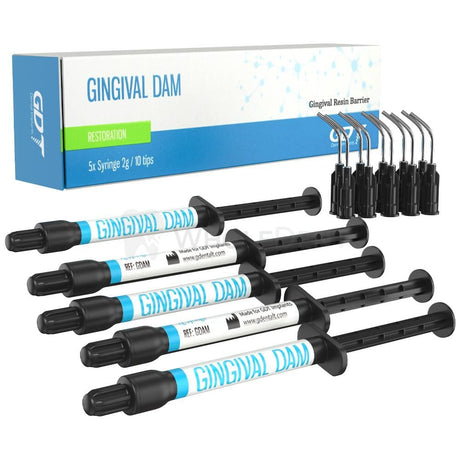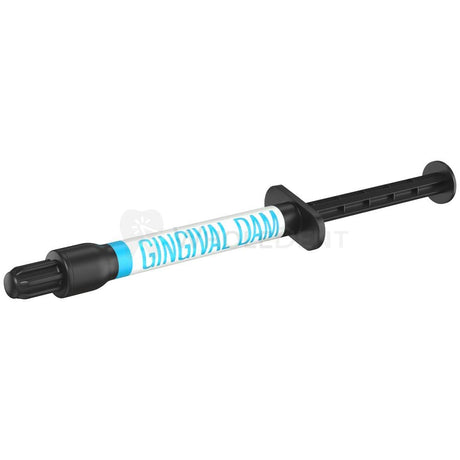GDT Supplies Gingival Dam Resin Barrier
$25.00 as low as $22.50Unit price /Unavailable- $15.00 as low as $13.50Unit price /Unavailable
FAQs
One of the most important things that dentists have to worry about when doing a procedure is microbial infection. The mouth and surrounding areas are often a breeding ground for many kinds of bacteria. A good dental rubber dam has to prevent these microbes from reaching the operation site.
It has been reported that, when used correctly, dental dams can reduce the rate of microbial contamination by up to 98%. When doing root canal work, using a dam becomes very important to prevent the contamination from entering directly into the bloodstream.
If a clamp is used to secure the dental rubber dam, it must be ligated by a 20-inch length of waxed floss. This will be secured to the patient’s napkin to prevent aspiration in cases where the clamp breaks or slips.
However, according to recommendations by the American Dental Association, even as little as 18 inches can be used. The most important thing is to ensure that you use clean floss when you move between the teeth to prevent transferring any contaminants from one site to another.
One of the most discussed drawbacks of using a rubber dam is the additional application time that is required, which often makes surgery a lot more difficult than it needs to be. It is also an intricate skill that needs to be practiced before it can be done efficiently.
Another consideration to make is the extra cost of buying dental dams. Although not the most expensive items on a dental surgeon's tray, they do need to be replaced quite often, which means the costs could add up.
In a recent study, it was found that the success rate for root canal treatments done without dental rubber dams was about 88%, while those done using the dam demonstrated over 90% success. A difference of over 2% is significant enough to show that dental dams are very important when doing surgery inside the mouth.
However, many dentists continue to resist using them, mainly because of the perceived difficulty of placing a dental rubber dam correctly. Often, some form of training is required before surgeons are comfortable enough to use them regularly.




